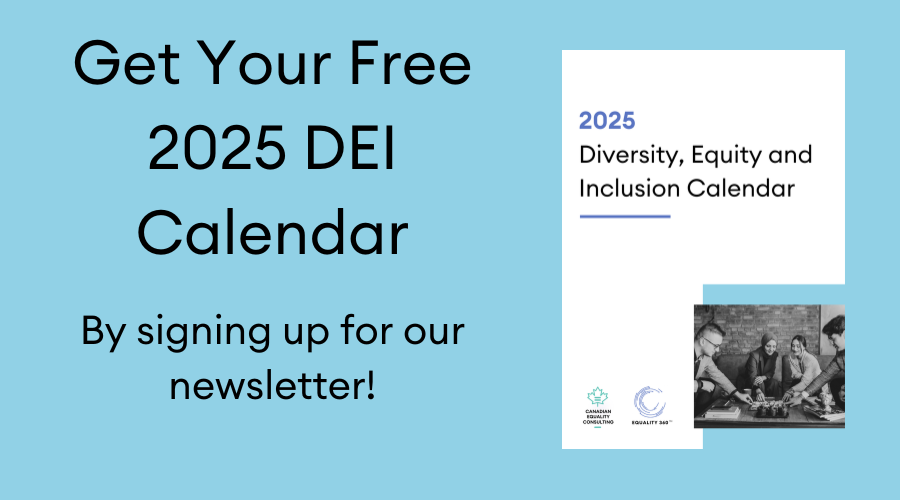
We’ve always been here – Queer nature (ecology) and humanity (anthropology)
Introduction
Transgender and queer people have always existed, and will continue to exist, so long as humanity does – queer and transness are innate to humanity and nature itself.
This blog, in acknowledging 2SLGBTQIA+ History Month as well as the current rise in anti-trans and anti-queer ideology, endeavours to elucidate the naturalness of queer and transness, through a journey looking at sex, gender roles, sexuality, and reproduction in animals, plants, and humans.
Consider everything you currently believe or know about sex, gender, and sexuality, and try to open yourself up to understanding these concepts within a much wider context. These terms will be examined in more depth later, but for now, reflect on the following:
- Sex, as a human-made construct, represents the way animals (including humans) are categorized based on their biological sex characteristics (e.g., reproductive traits, hormones, internal and external genital presentation, brain chemistry, and more).
- Gender, different from sex, is a construct that constitutes an internal sense of alignment within the context of societal gender roles, expectations, norms, and expression. Gender identity is complex, encompassing categories such as woman/feminine, man/masculine, non-binary or gender-non-conforming, transgender, Two-Spirit (an Indigenous-specific sexual and gender identity), agender (someone who does not feel a sense of gender identity), gender-fluid (someone whose gender changes over time), and more.
- Sexuality represents the sexual and romantic or companionship attraction that animals experience towards each other. There are monosexualities (attraction to one gender, which includes heterosexuality and homosexuality) as well as polysexualities (attraction to multiple genders or regardless of gender, including bisexuality and pansexuality), and asexuality (experiencing little to no form of sexual and/or romantic attraction). Studies have identified that genetics (not just environment or ‘exposure to homosexuality’) do play a role in homosexual and bisexual behaviour (read more in this article).
The first section of the blog will examine sex traits and sexuality within the natural world beyond humans, specifically in animals and plants. Second, will be an analysis of sex, gender, and sexuality in humans throughout history and around the globe. Lastly, the aforementioned topics will culminate into a broader discussion on advocacy for the queer and trans community today, and toward a better understanding of the existence of queer and transness in humanity and nature.
1 – Queer and Trans Animals and Plants
Examining queer and transness in nature falls into a field of study known as ‘Queer Ecology,’ which has emerged more prominently in recent years as improved social tolerance of gender and sexual diversity has allowed for more acceptance towards the study of these concepts historically and widely considered ‘taboo.’ However, countless studies have confirmed that
So, how do sex characteristics and sexuality manifest in nature?
Sex, sexuality, reproduction, and gender roles in animals:
Examining animals (or ‘fauna’) first, this includes mammals (the category humans fall into), birds, reptiles, amphibians, fish, insects, arachnids, and many more – i.e., the living creatures on our planet that are not plants.

Photo by Wallace Heng on Unsplash.
Many species of frogs and other amphibians have been found to be able to change their sex, often in response to environmental features such as temperature.
Sex, sexuality, reproduction, and gender roles are complex and highly diverse in animals. This is because all creatures today that reproduce sexually have evolved such characteristics in their divergence from single-celled organisms, which produce asexually. Sexual reproduction has many benefits that asexual reproduction lacks, namely, the lack of vulnerability to being wiped out to extinction by a single affliction (asexual reproduction produces genetic ‘clones’ of the parent, rather than genetically unique organisms, which possess greater diversity and thus capability to survive different illnesses or other afflictions). The complexity of animal sex traits and sexuality function to bolster their species’ survival, since the traits emerged via evolution and to this day (watch this video to learn more).
The sexual diversity and non-binary nature of sex in animals is clear. While mammals carry X and Y chromosomes, other animals carry W and Z chromosomes (such as birds and snakes). Some creatures are born three sex chromosomes, while others have only one; sex traits encompass genitalia, chromosomes, and other features, which vary significantly per animal and species. Determination of sex traits is also very complex, as environment is the determining factor for some creatures, while parent chromosome is the key for others (watch this video to learn more about the complex nature of sex determination in animals). Presentation of external sex traits like genitals also vary, as some creatures present with male, female, or intersex traits. Many animals can also change their sex over time, including some mammals (lionesses have been documented changing their sex traits like growing a mane, and living as lions), amphibians (such as frogs), reptiles, fish (clownfish, for example), and more.
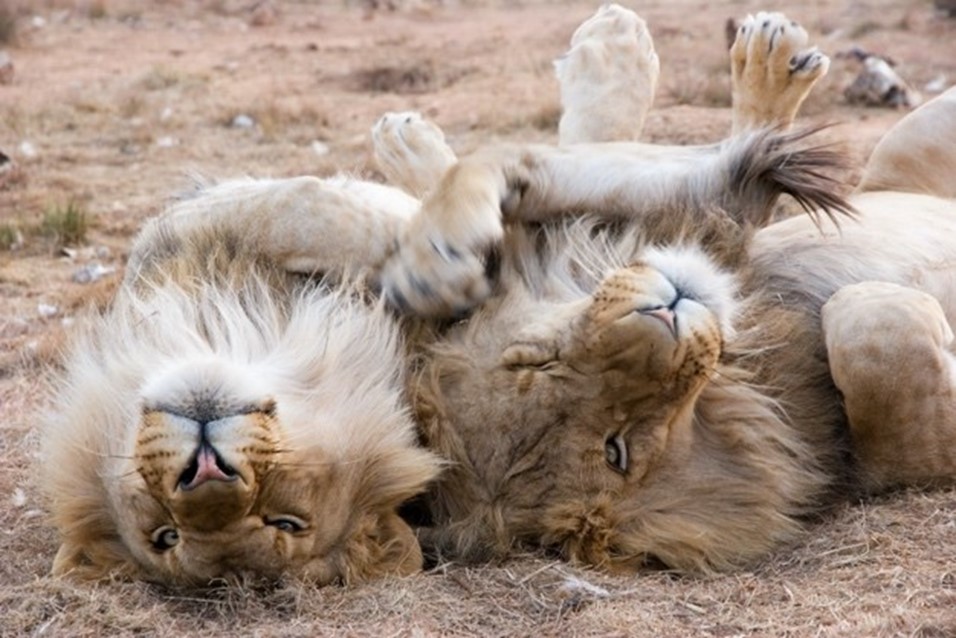
Photo by Gary Whyte on Unsplash.
Lions and lionesses have been found to practice homosexuality and bisexuality; additionally, there have been many documented cases of ‘transgender lions,’ where born female lionesses will adopt male lion features such as a full mane, deeper roar, and behaviours typically observed in male lions (read more in this article).
Sexuality is not the same in animals as it is in humans, as animals are not able to categorize and define their attraction or behaviour in the same terms or capacity. Animals do display sexual attraction and companionship, however.
Homosexuality and/or bisexuality is widespread throughout the animal world, with homosexual behaviour being found in virtually all species in which it has been looked for (this includes: mammals like lions, chimps and apes, elephants, and dolphins; birds, such as penguins, albatross, flamingos, hummingbirds, and swans; amphibians like frogs, toads, and salamanders; reptiles such as tortoises, snakes, and geckos; fish including angler fish and salmon; insects including dragonflies; arachnids and creatures including octopus, spiders, and crabs; and many other animals). In fact, research suggests, “bisexual behaviour goes back as far back as the earliest branches that led to modern animals” (read more about queer ecology here ). Many animals (including mammals, birds, some deer, elk, and others) engage in polyamorous sexual relationships, and some animals (such as crocodiles, lizards, some amphibians, starfish, and some insects) reproduce asexually. The diversity of sexuality within animals is kaleidoscopic.
Sex traits and reproduction in plants and other species:
Plants (flora) are not exempt from possessing their own complex sex traits and means of reproduction (though, reproduction in plants significantly differs from reproduction in animals).
Plants are capable of both asexual and sexual reproduction. There are different methods of asexual plant reproduction, including processes known as vegetative propagation, fragmentation, budding, spore formation, and more. Asexual reproduction creates clone-like offspring, and only requires DNA from one parent. Sexual reproduction, in plants, requires genetic materials from two parents, which occurs through a process known as pollination. Have genetic materials from two different parents is beneficial for offspring as they are more adaptable to environmental changes. Learn more about plant reproduction in this article.
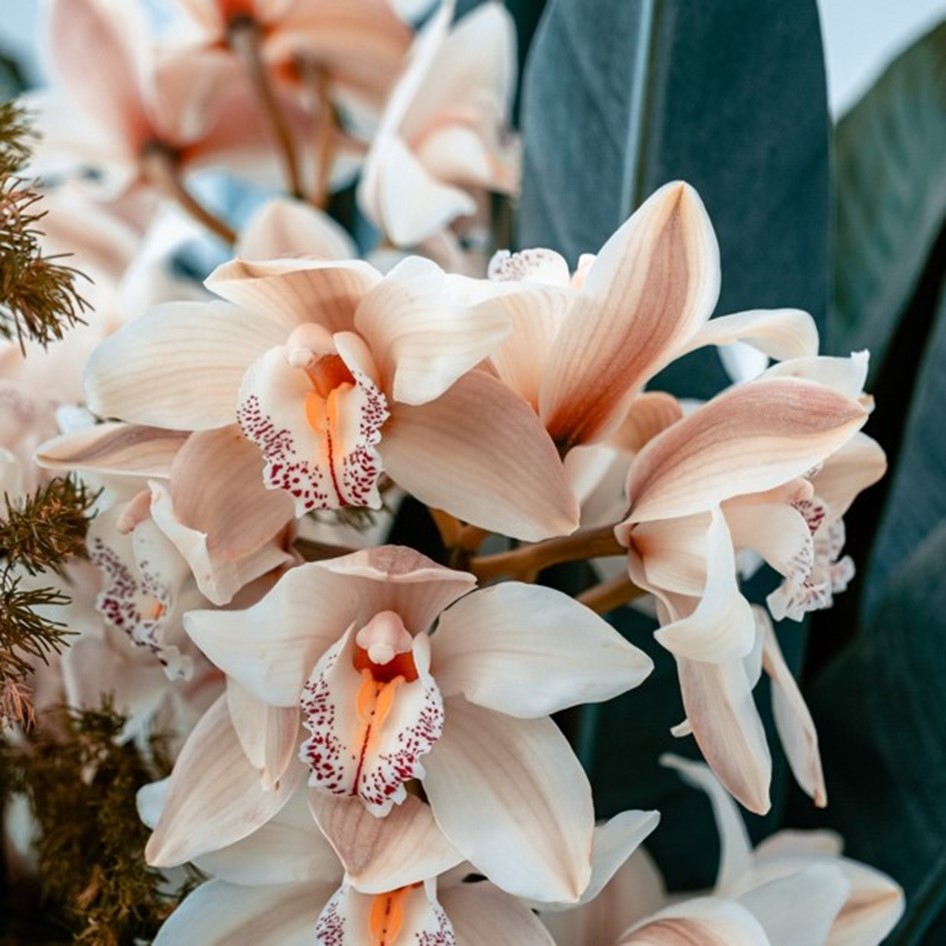
Photo by Timo C. Dinger on Unsplash.
Orchids are a species of flower that often bloom ‘bisexual’ flowers.
Trees reproduce through a process involving pollination, an exchange of genetic materials from two parents, ‘male’ and ‘female.’ However, some trees possess both ‘male’ and ‘female’ characteristics, and may reproduce asexually – though, many trees do not develop their male and female traits at the same time, ensuring they do not self-pollinate.
It is estimated that about 90 percent of all flowering plants have bisexual flowers (in plants, bisexuality is a term comparable to being intersex, where a plant holds both ‘male’ and ‘female’ anatomy at the same time. Some examples of bisexual flowers include orchids, roses, and lilies, sunflowers, daffodils, and mango, among many others. While trees may possess ‘female’ and ‘male’ traits, they are not considered bisexual plants, because they generally do not possess both traits at the same time, but at separate points in the trees’ lifetime.
Kelp, which is a species of algae or seaweed that is not classified as a plant or an animal, is a species that reproduces in a cycle known as alternation of generations, where one generation reproduces asexually, and the next offspring reproduce sexually, and repeat.
Fungi are also different from both plants and animals, falling under their own umbrella; they display a highly complex range of sex characteristics. For example, Schizophyllum commune, also known as the split gill mushroom, is a wood-rotting fungus that has over 20,000 distinct sexes (read more in this article). It is not uncommon for fungi to present with numerous diverse sex traits.
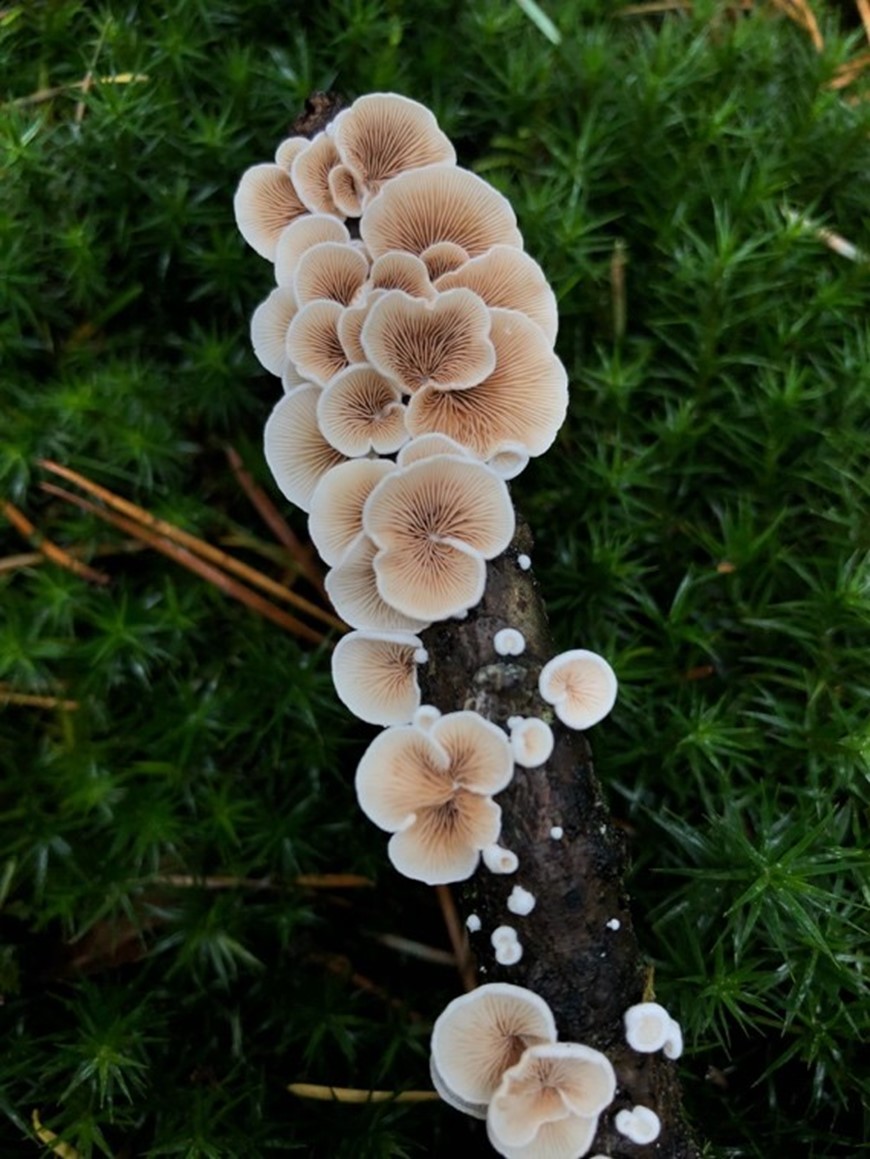 Photo by Guido Blokker on Unsplash.
Photo by Guido Blokker on Unsplash.
Schizophyllum commune is a wood-rotting fungus that has over 20,000 distinct sexes.
The existence of queer, trans, and sexual diversity within animals and even plants clearly illustrates how queer and transness are innate to nature. Though, it is also important to note that this information has been weaponized by anti-trans groups and individuals in positions of power in the past. Interestingly, when European colonial powers encountered Indigenous cultures and other Peoples who engaged in queer relationships as well as those who lived as transgender, anti-queer and anti-trans Europeans framed their lack of understanding about animals to form conclusions about other cultures, saying “animals do not practice homosexuality or transition to live as another gender, so these acts must be immoral and unnatural in humans.” This played a role in colonial and racial ideology, as people who were not white and living openly as queer or trans was portrayed as ‘validating’ the idea of White Supremacy, because queer and transness were equated with being unnatural and immoral. However, once research had been conducted and the sexual and sex diversity within animals was recognized, the argument against queer and transness flipped, with anti-trans groups saying, “the fact that animals practice homosexuality and sometimes change their sex or gender indicates that being queer or trans are ‘unevolved,’ ‘primal,’ or ‘animalistic’ behaviours” (learn more in this article). The way this argument evolved to first admire the connection of humans with animals and nature and then to depict humans as above and disconnected from animals and nature, also parallels the evolution of colonial resource extraction and capitalistic exploitation of the natural world. As Western society became more disconnected from nature, we alienated ourselves. The concept of eco-feminism depicts how humanity’s relationship with the Earth has come to parallel the patriarchal relationship of men with women and gender diverse folks, ultimately as destructive, exploitative, and domination focused. Humans are, at our core, nature – though, years of colonialism, White Supremacy and racism, patriarchy and sexism, ableism, homophobia and transphobia, as well as capitalism and environmental exploitation and destruction, have rendered much of our species to see themselves as extrinsic creatures from the world in which we live.
Queer and transness in the animal, plant, and natural world demonstrate that such proclivities are just as innate in humanity. We evolved on this planet among plants and animals, sharing common ancestors and environment, and while humans are their own species within the animal world, we are just as well a part of nature.
2 – Queer and Trans Anthropology (Human History, Culture, and Biology)
In humans, similarly to many animals and particularly mammals, sex characteristics present on a spectrum from male to female (read about sexually dymorphic behaviour here), with many possible variations in-between, which refer to people who are intersex (people who present both male and female sex traits, read more here).
Humans today have created a medical system that assigns sex category to us at birth (known as “sex-assigned-at-birth”), which generally involves a visual examination of an individual’s external genitalia. For people who present with intersex sex traits, it is standard in many countries for doctors to perform non-consensual ‘corrective’ surgeries on infants to force the child to conform within the ‘standard’ male or female categories. Intersex erasure is frequent and systematic, serving as a colonial tool reinforcing modern conceptions of ‘binary’ gender and sex.
Gender, a construct encompassing distinct elements from sex, is complex and includes many identity categories, such as woman/feminine, man/masculine, non-binary or gender-non-conforming, Two-Spirit (an Indigenous-specific sexual and gender identity), agender (someone who does not feel a sense of gender identity), gender-fluid (someone whose gender changes over time), and more. Gender identities are not the same in every human culture around the world, and the different ideas and social norms of what gender identities are acceptable in a society at a particular time in history change. The social understandings and behavioural norms of gender fluctuate geographically, culturally, and through time.
To understand modern gender and sex language, the terms transgender, cisgender, and non-binary and gender-non-conforming will be defined:
- Transgender refers to people whose gender identity is different from their sex assigned at birth. For example, a transgender man may be someone who was assigned as female at birth and is a man. The Latin prefix ‘trans’ means ‘to change’ or ‘across.’
- Conversely, cisgender refers to folks whose gender identity is in alignment with their sex assigned at birth. The Latin prefix ‘cis’ means ‘on the same side.’
- Lastly, non-binary is a term meaning literally, “not one of two options.” In relation to gender, many people exist outside of the binary gender identities man and woman, and so the non-binary umbrella encompasses those gender identities. This includes genderfluid, agender, demi-gender, and more. In a similar vein, gender non-conforming, gender-diverse, and genderqueer are terms referring to those people whose gender identities do not belong within the binary of man or woman. There is a lot of language being produced to depict the space beyond the man and woman binary, and as such, it is important to recognize the constant evolution of language and our understanding of social concepts.
In understanding the connection of biology with gender, gender identity, and transness, consider the findings of numerous studies outlining evidence that not only do cisgender women and cisgender men ‘present moderate differences’ on a spectrum in brain anatomy, but also, transgender women and transgender men’s brains tend to present distinctly from both cis men and women within that spectrum – which means that for trans folks, their brain chemistry presents distinctly from their sex assigned at birth – thus demonstrating biological indicators for transgender gender identities (watch this video to learn more). Limitations in the number of studies do exist and there is insufficient information available about the brains of non-binary and other gender diverse folks. As such, much more research on the matter should be conducted to examine further how gender identity may be determined in part by biological factors.
Clownfish communities operate under matriarchy (female fish are the dominant fish), and if a dominant female dies, the most dominant male fish will change its sex to become female (an occurrence known as sequential hermaphroditism, which you can read more about in this article).
Throughout global human history, there are accounts of gender and sexual diversity.
The following section will examine various examples of gender and sexual diversity in different cultures from continents around the globe throughout history (this is a nonexhaustive list; to learn more, see the list of resources provided at the end of the blog).
Indigenous Peoples of Precolonial America, Australia, and the Pacific Islands:
Before European colonialism beginning in the late 1400s – and since time immemorial – many Indigenous communities recognized more than two genders, and many transgender, non-binary, and queer folks were revered for their connection to spirit and held unique roles in their communities. Hundreds of Indigenous Peoples across what is today known as North, Central, and South America lived in communities that accepted and honoured people who were gender and or sexually diverse, along with many Peoples of the Pacific Islands, Aotearoa, and Australia.
Two-Spirit is a modern term referring to an Indigenous identity encompassing both gender identity and sexual orientation; it was coined from the Ojibwa words niizh manitoag (meaning “two spirits”) in 1990 at the third annual intertribal Native American/First Nations gay and lesbian conference in Winnipeg, Manitoba. The term was created to reflect the historical, spiritual, and cultural aspects of these people in many Indigenous communities prior to colonialism, though this term is not used by all Indigenous Peoples, particularly as some use terms within their own language. For example, the term wíŋkte is used among the Lakota, the Ponca use the term mixuga, and badé is used by the Crow.
In pre-colonial Diné society, in what is today called North America, people recognized five distinct gender identities, including specific social roles for all.
The Incas, as part of pre-colonial Andean culture in what is today called South America, honoured a gender non-conforming deity named chuqui chinchay, and it was gender non-conforming people within the society who were designated to perform rituals for this god.
On what is now known as Hawaii in the Pacific Islands, the Kanaka Maoli recognized three genders; mahu were people whose sex traits were male or female but lived as a different gender from their sex at birth.
Also in the Pacific Islands, Samoan people acknowledged people who lived as a “third gender,” known as fa’afafine.
Read more about these people here.
Africa:
Today, Africa is a continent where strict anti-trans and anti-queer laws are in effect in numerous countries, including even death sentence as punishment. However, prior to European enslavement of African people, colonial resource extraction, and partition (arbitrarily creating national boundaries, not tied to cultural or ethnic groups) throughout the continent, many communities and societies across the land recognized gender identities beyond man or woman, and people who engaged in homosexual or bisexual acts.
In precolonial Uganda, the Ankole people honoured an oracle to the god Mukasa who was a female living as a man. Uganda in the year 2023 is one of the most anti-queer and anti-trans countries in the world, with gay and other acts punishable by death. There is also much societal opposition to queer and transness, with many perceiving them as unnatural and sinful.
In Madagascar, the Sakalayas were people who respected transgender people, even raising “feminine” young males as girls. Similarly, the Antandroy and Hoya people referred to transgender folks in their communities as sekrata.
In the North African country of Egypt, many historical ancient deities are androgynous or gender non-conforming. For example, the goddess Mut (goddess of motherhood) and Sekmeht (goddess of war) are both depicted as women with penises. Some deities even shifted their gender presentation over time. As well, sexuality and gender in Ancient Egypt were not considered taboo; as far back as 2400 BCE, tombs have been found with two men embracing each other as lovers (for example, the bodies of Niankhkhnum and Khnumhotep).
Zimbabwe is a country home to the earliest known cave paintings depicting homosexual sex, dating back to about 8000 BCE.
Dating back even to the earliest humans in Africa, it has been found that some early homo sapiens did engage in homosexual or bisexual relationships, with others being gender non-conforming. In fact, there have been homosexual relationships found in virtually every stage of recorded human history.
Asia:
For millennia, there have been societies throughout Asia that recognized people living in gender roles beyond man or woman, and folks who were homosexual or bisexual.
While today, China is a country with anti-queer and trans ideology prevalent in much of society, stemming back to the Age of Antiquity (about 3000 BC to mid 400s BCE), there were people living outside of the gender binary and engaging in homosexual or bisexual relationships. Eunuchs were people born as males who were castrated and lived as women or as a third gender, often being religious figures or employed as servants or guards in palaces.
In India, the term Hijra is used to describe folks living as transgender or gender non-conforming; while this term is still used today, these people have existed in Indian society for millennia. Hijras are also found in Pakistan and Bangladesh. Learn more about this community in this video.
Some communities in Indonesia recognize three genders, with the third being called waria. Other ethnic groups, such as the Bugis, recognize five genders – the makkunrai (females who are women), oroani (males who are men), calalai (females who are men), calabai (males who are women), and bissu (gender non-conforming or transgender religious figures).
The kathoey or katoey in Thailand are transgender women or gay men; these terms are viewed as a third gender by many in the country.
Europe:
While it may seem antithetical to the colonial ideology to imagine queer or trans people living in Europe throughout history, there are many accounts (and many that were erased) of Europeans living outside the gender binary and/or engaging in homosexual or bisexual relationships.
For example, even in Naples, Italy – a highly Catholic society – there have been people assigned as male at birth who live as women in a centuries old phenomenon called femminiellii.
Even in ancient empires, such as the Roman, Greek, and Ottoman Empires, there are many examples of queer, trans, and gender non-conforming people – though, social acceptance was not widespread. Various Roman emperors would castrate their male partners and force them to live as women, and numerous Roman gods were gender non-conforming or intersex (for example, the gods Hermaphroditus and Aphroditos both had female and male sex traits). In the Greek origin of humanity story, Prometheus – sometimes depicted instead as Apollo, the god of the sun – was supposedly “drunk” while making some humans, which is an explanation for people who are transgender and “born into the wrong bodies.”
Some of the earliest accounts of gender and sexually diverse people in Europe stem back to queer art in the form of cave paintings, found in the Addaura Cave in Sicily, Italy, dating back to approximately 9600 – 5000 BCE. Read more in this article.
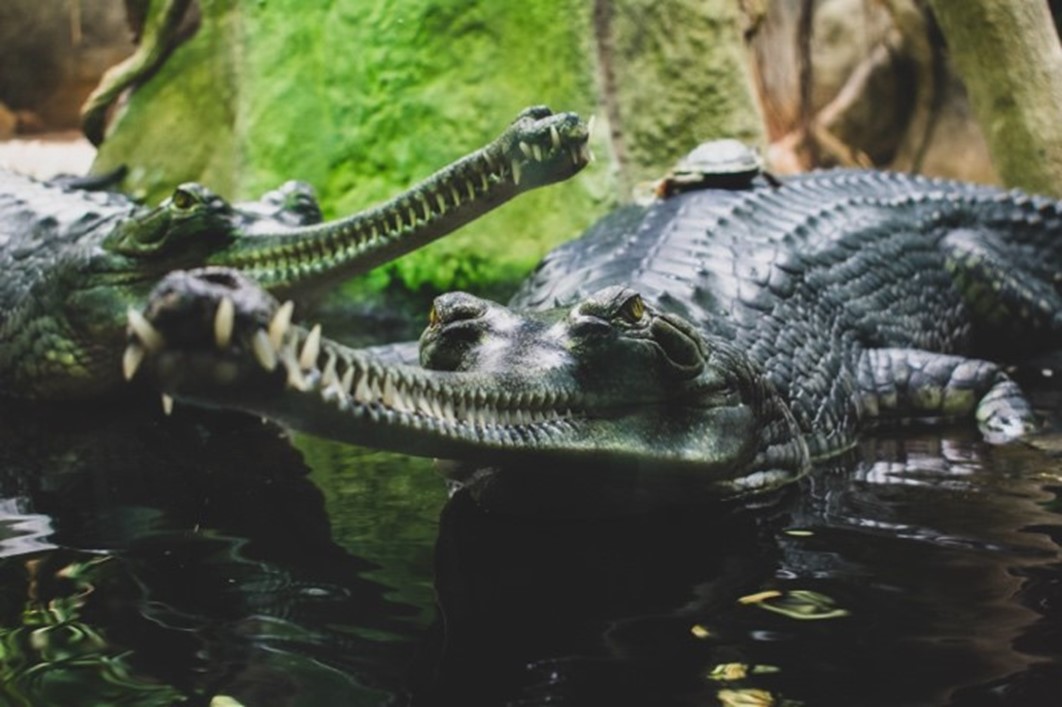
Crocodiles have been known to reproduce asexually, along with other reptiles, amphibians, insects, and other species.
European Colonialism and the Dispersion of Compulsory Heterosexuality and Binary Gender Roles:
The current-day standards for binary gender roles and sexes along with compulsory heterosexuality are products of European colonialism attempting to advance their power and wealth over divided masses, through the ‘othering’ of any ‘out’ groups. As colonial powers encountered societies, communities, cultures, and peoples who recognized and accepted non-binary gender identities as well as homosexuality and queerness, they framed queer and transness within these People of Colour as indicative of their ‘inferiority’, and thus as a justification for their oppression and subjugation. Queer and transness did not align with the colonizer’s white, Christian, European, and imperialist norms. Gender and sexual diversity were thus portrayed by colonizers as unethical, and as a threat to the cis-hetero-patriarchy, specifically to those who benefit from it (I.e., white cisgender straight men). The creation of binary gender norms and heterosexuality as the standard were intentional products of the colonial machine in its imperial quest for power. Our society and our gender and sexuality norms today exist as they do because our foundation has been built through the ideals of white supremacy and cis-hetero-patriarchy.
European colonialism involved creating, dispersing, and maintaining binary gender roles, binary sexes, and compulsory heterosexuality globally as a tool to further their expansion and power. These specific norms for gender, sex, and sexuality – as they were envisioned by European colonial powers – were distributed to different communities and nations globally through European colonization and imperialism (learn more in this paper). The lack of queer and trans folks (and animals) mentioned throughout much of history and modern education is not because of their absence or because queer and transness are ‘trends’ of the present, but rather, because these people and communities have been systematically and socially oppressed.
Binary gender, binary sex, and compulsory heterosexuality are themselves ideologies based in racial ideology, white supremacy, and misogyny/patriarchy.
Today, there are just 34 countries globally where same-sex marriage is legal (of about 195 countries total). In none of these countries has full equality been achieved for people in the 2SLGBTQIA+ community.
See the resources section at the end of this blog for a list of some organizations working to advance rights for trans and queer people globally.
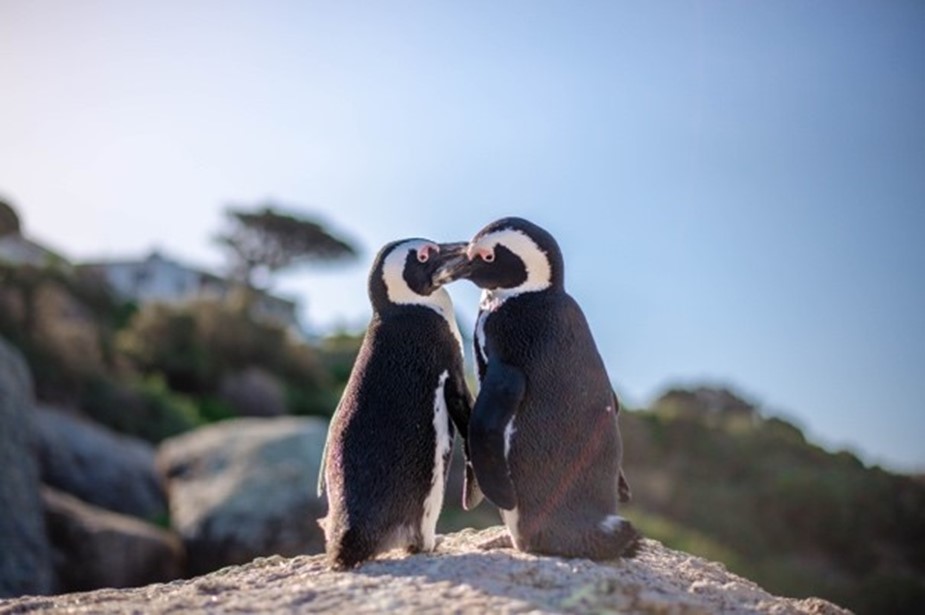
Photo by Clyde Thomas on Pexels
Penguins are a species of bird that are well known to commonly engage in homosexual relationships and sex; they are often bisexual and sexually non-monogamous (read more here).
Whenever you think about the original peoples of these lands, or when you hear or see a land acknowledgement, may you be reminded that not only are these lands unceded transitional territories of many indigenous peoples, but gender/sexually diverse people have lived and grown in harmony with these lands since time immemorial – queer and transness are embedded in the very dirt on which we stand.8
Queer and trans people have always been here, and they will continue to exist within humanity, because we are also part of nature.
3 – Creating a Safe and Inclusive Culture with the Queer and Trans Community in 2023
In relation to activism for the queer and trans community and in creating safe and inclusive spaces, our understandings of sex, sexuality, and gender may play a huge role in demystifying harmful rhetoric about queer and transness.
It is critical we go beyond pathologizing queer and transness as ‘deficiencies,’ instead recognizing their innateness with humanity and nature. There is nothing wrong with queer or transness, and they are natural to animals just as well as humans.
Along with the rise in hate targeting the trans and queer community, there is in tandem a rise in misinformation being spread about gender and sex. For example, some of the rhetoric claims things like “gender and sex are the same thing,” “there are only two genders/only two sexes,” and “biology is binary” (among other similar language). This rhetoric is not only harmful as it perpetuates real-world violence and discrimination against trans and non-binary folks, but it is also entirely inaccurate. To the first point, sex and gender are human-made categories, which means they are terms created to capture specific elements, and the traits the two terms capture are not the same (sex captures genitalia, brain chemistry, hormones, and other physical sex traits; gender captures an internal sense of alignment with gender in a particular society, including gender roles, means of expression, and gender identity – gender is not a new concept either, it is identifiable within human cultures throughout history). To the idea that there are only two (‘binary’) genders or sexes, numerous societies around the world have acknowledged and honoured gender identities beyond the binary of man and woman, since before time immemorial; additionally, humans are not the only animals who exist outside of a sex or gender binary. Sex traits not manifest in just two distinct ways, but they have variation and complexity, just like other traits such as hair colour. And, to the last point, biology is not binary in nature – not in humans nor in animals. Most of us who were taught in school about sex and gender were not told the complete and complex story. While it may be new for some folks to hear about concepts like ‘non-binary’ or ‘intersex,’ the reality is that these people and concepts have been around for millennia.
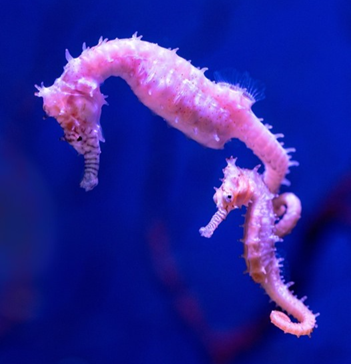
Photo by David Clode on Unsplash.
Seahorses are an interesting species of fish, where the male seahorse is the animal that will be pregnant and give birth, rather than females (learn more in this video).
Workplaces can play a significant role in discrediting harmful misinformation by sharing resources and information. On an individual level, employers can lead by example using their platform (as a leader as well as using a virtual platform) to challenge hate and misinformation. Addressing barriers impacting queer and trans folks can include things such as: using gender neutral language, having an all-genders washroom available, not making assumptions about anyone’s sexuality or gender, regularly practicing and respecting people’s pronouns, having equitable and inclusive parental leave, and more. While some folks have claimed ‘sexuality and gender have no place in the workplace,’ these constructs are present anywhere there are humans. Gender and sexuality (for cisgender people as well as transgender folks, and for straight people just as much as homosexual and bisexual people) are present in the workplace in everyday conversations, in gender expression, in the very infrastructure of a building (bathrooms and changing rooms, for example), and many other ways. As such, workplaces have a responsibility to ensure they are considering the needs of gender and sexually diverse people and communities, to be truly equitable and inclusive for all.
While discussing homophobia, transphobia, patriarchy, and the combined cis-hetero-patriarchy, it must be acknowledged that these oppressive systems did not birth themselves, but rather, they were formed in tandem with other oppressive colonial systems including racism and White Supremacy, as well as ableism. As such, BIPOC queer and trans folks in our society face a unique form of oppression defined by aspects of racism, homophobia, and transphobia. Recognizing this reality, advocacy and allyship with the queer and trans community should center on the experiences and needs of BIPOC queer and trans people, as those who face heightened forms of discrimination, oppression, and violence.
Conclusion
If queer and transness are not topics you are very familiar with, it is okay to be confused and require more time learning. These concepts, while potentially daunting in their complexity, are nothing to fear or marginalize – they are as old as nature on Earth and have always been a part of humanity.
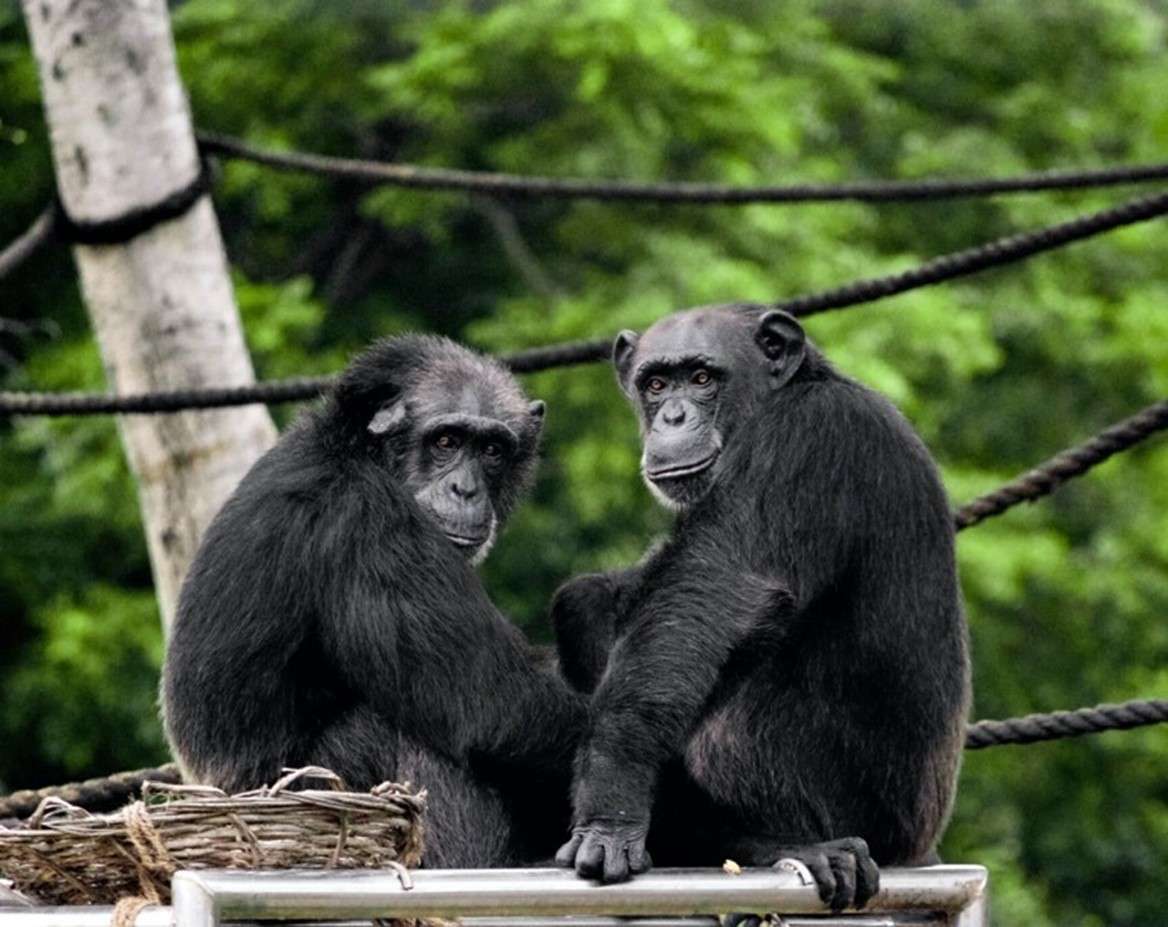
Photo by satya deep on Unsplash.
Chimpanzees and apes (bonobos in particular), as some of the closest animal relatives to humans today, frequently engage in homosexual, bisexual, and polyamorous relationships.
Imagine the role you can play in demystifying harmful misconceptions that serve to further marginalize and discriminate against the 2SLGBTQIA+ community, and how gaining a better understanding of queerness and transness in nature and humanity can be utilized to help dismantle oppressive systems and social norms. For example, consider how the current power structures benefit from the continued marginalization and oppression of queer and trans people. This oppression is a product of human-manufactured social hierarchies, where some people are valued and thus treated better than others on the basis of human-made identity categories. So, racism benefits white people while disadvantaging and oppressing everyone who is not white; cis-hetero-patriarchy disadvantages everyone who is not a straight cisgender white male; and so on. These historically founded systems serve to benefit a small few, while those who – in any identity category, including race, ethnicity, religious affiliation, gender, sex, sexuality, disability, class, age, … – belong within a group deemed as ‘hierarchically lower/lesser,’ face marginalization, inequities, oppression, discrimination, violence, and more. These systems of hierarchy and oppression are not found throughout the natural world, but only within humans – while the same cannot be said for queer and transness, which are loudly present throughout animal and plant species globally.
It is not a new phenomenon to acknowledge and respect gender and sexual diversity, but it is actually a return to nature and genuine humanity.

